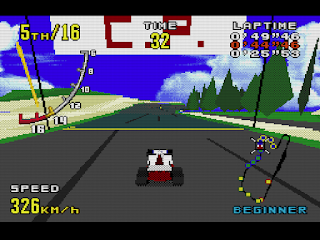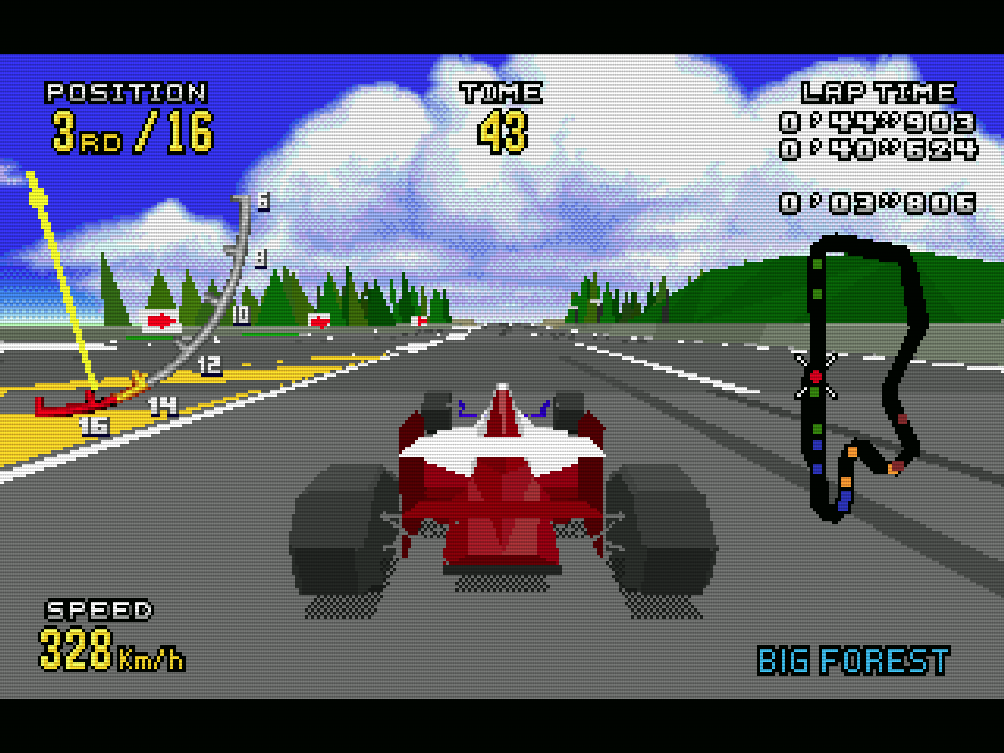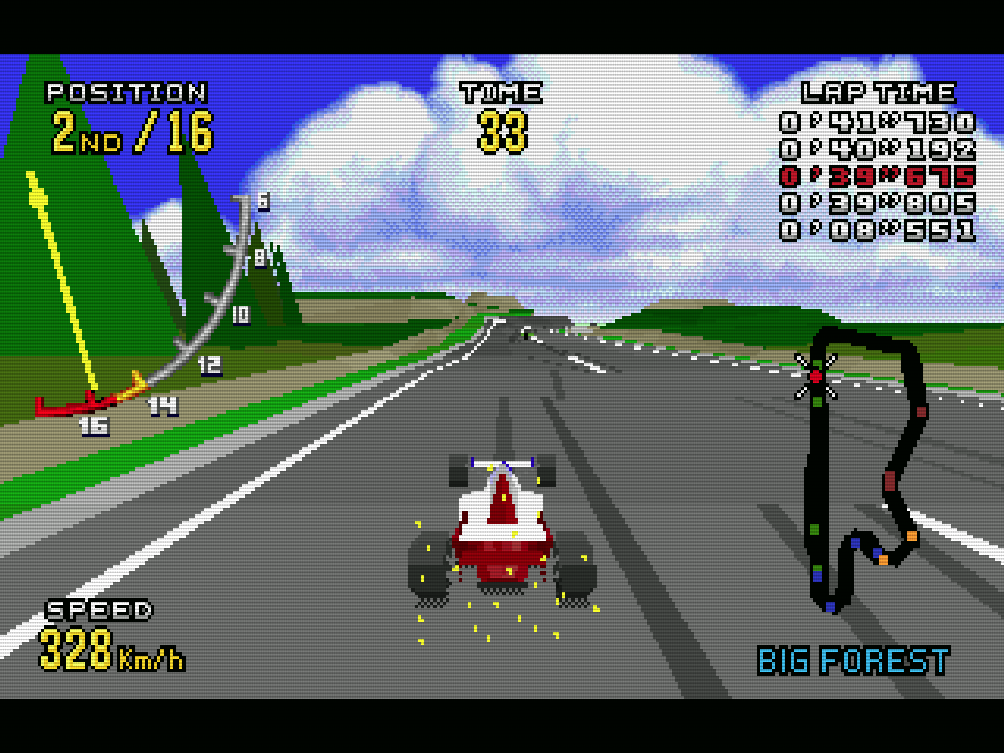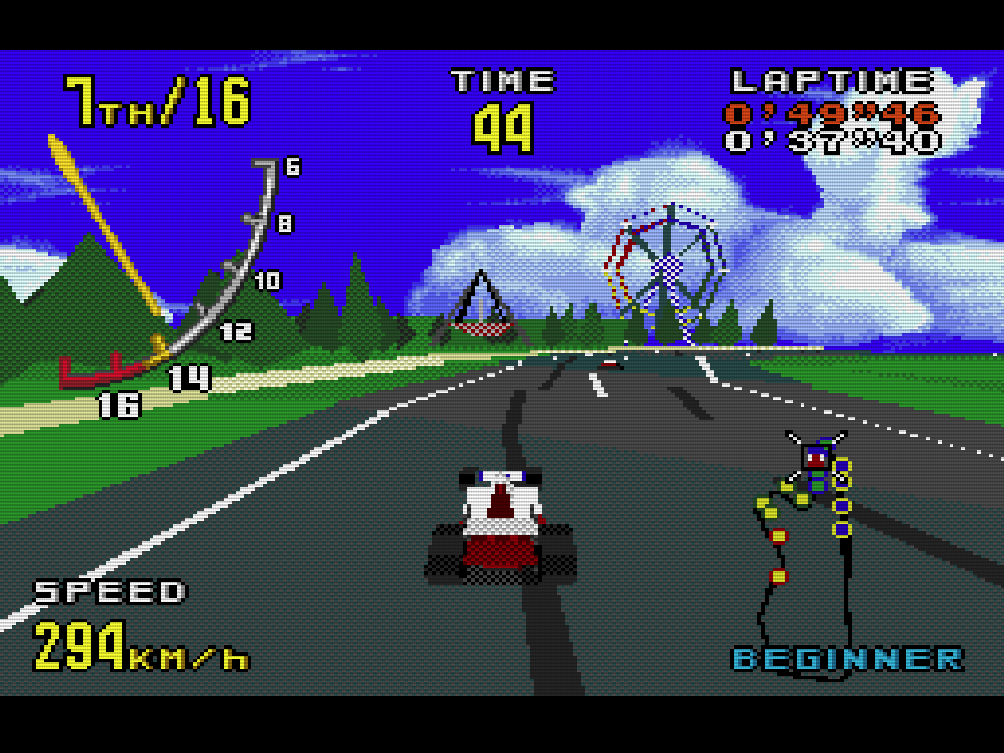Virtua Racing in the arcade was a revelation. Until this point driving games were generally represented by a curving path drawn on a 2D plane, with you having to react left and right to keep in the middle of the road (the game was moving your sprite automatically in the opposite direction). As amazing a game Chase HQ on the CPC was, the driving model was basic at best. Even Road Rash had only a semblance of steering. There were some exceptions – Hard Drivin’, Stunt Car Racer, all the Mode 7 flat racers on the SNES – but it wasn’t until Virtua Racing appeared that you could really feel like you were driving a racing car.
It came with a price tag. While most games in the arcades were 50p a go (or even 10p for the older cabinets), the big noticeable Virtua Racing cabinet was £1. I hadn’t paid £1 for a go of an arcade game since the Virtuality cabinet on which I played VTOL. At least Virtua Racing didn’t make me feel ill, with a headset that didn’t fit properly and a framerate that was probably measured in seconds per frame, although going back to the arcade game now the refresh rate isn’t anything to write home about either.
So I didn’t play VR much in the arcade, but the few times I did it was a great experience. And then they announced it was going to be released for the Mega Drive. Oh my.
It cost £70, almost twice the price of a standard game, and it included an extra processor to allow for the polygonal graphics. The framerate wasn’t amazing (15 fps compared to that arcade’s 30), the graphics were very much cut back, but the feeling of racing was still there. I bought Virtua Racing and played it a lot.





I don’t think any other games ever used the same extra processor on the Mega Drive, but not long after Virtua Racing was released Sega announced new hardware for the home – not only a new console (which would be launched as the Saturn), but an add-on for the Mega Drive to increase its capabilities. The 32X did not sell well, which is why I was able to buy mine for £25 a couple of years later. It’s a fun machine to own because the games are actually pretty decent, even today.
Sega released Virtua Racing Deluxe for the 32X, and it’s a big step up from the Mega Drive version. It runs at 20 fps – which is still very low for today’s standards, but feels fine – and there’s a lot more detail on the screen. I played this version even more than the MD game, even though I did get it much later on.





Since Virtua Racing Deluxe was a launch game for the 32X, both these games came out in 1994 – March for the Mega Drive, and December for the 32X. Comparing the two games shows quite a lot of progress for nine months – and the huge upgrade the 32X was able to enable.


The resolution and clarity of the graphics is immediately apparent here – the 32X has more colours, relying less on dithering for shading, and everything is made up of more polygons. Even the HUD overlay is better constructed, with the map rotating with the car, and the information taking up a little less space.


I must apologise for the lack of consistency between these images – I wasn’t planning on comparing them when I took the screenshots. Nevertheless, you can see here the detail on the car is massively improved for the 32X game, even if you can’t see the struts holding on the wheels (due to them being the same colour grey as the road).
You can also see that I completed the course faster on the 32X.


The 32X has added particles, a clarity around the edge of the road, and for some reason the car’s at a slightly different angle.
Revisiting these games (admittedly via emulation) is instructive to see how far we’ve come, and yet also how much has remained the same. Virtua Racing came out on the Switch a few years ago, and it is (as you’d expect) even better than the arcade game – 60 fps, improved handling, expanded game modes – but the game plays the same as ever, and the Mega Drive versions are just as fun.
